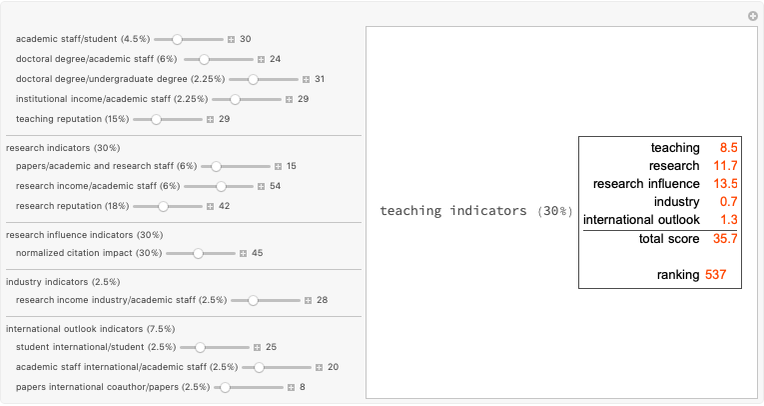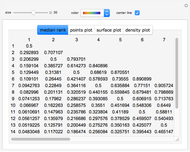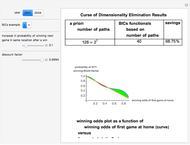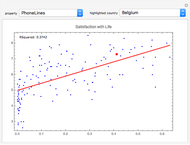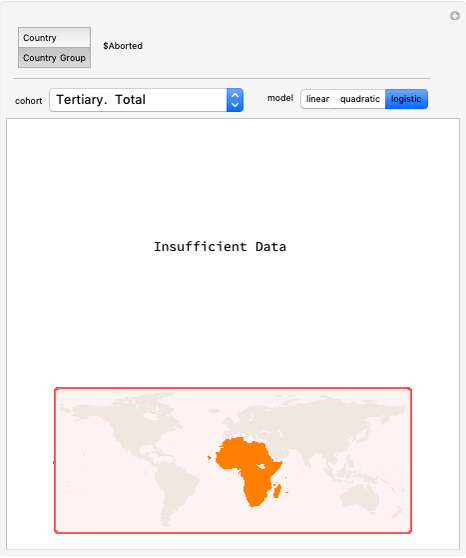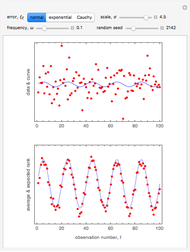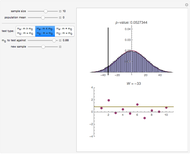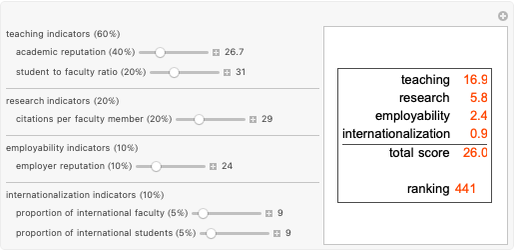Quacquarelli Symonds (QS) World University Rankings

Requires a Wolfram Notebook System
Interact on desktop, mobile and cloud with the free Wolfram Player or other Wolfram Language products.
This Demonstration lets you explore the effects of the scaled indicators on the overall score in QS World University Ranking [1], which is based on the four performance indicators designed to assess universities from four areas: (I) teaching, (II) research, (III) employability and (IV) internationalization.
[more]
Contributed by: Merve Samioglu (January 2023)
Open content licensed under CC BY-NC-SA
Snapshots
Details
References
[1] QS World University & Business School Rankings. (Nov 14, 2022) www.qs.com/rankings.
[2] E. Siniksaran and M. H. Satman, "WURS: A Simulation Software for University Rankings," Scientometrics, 122(1), 2020 pp. 701–717. doi:10.1007/s11192-019-03269-8.
Permanent Citation







